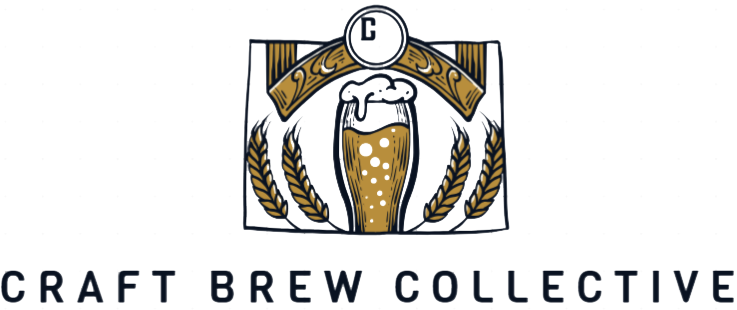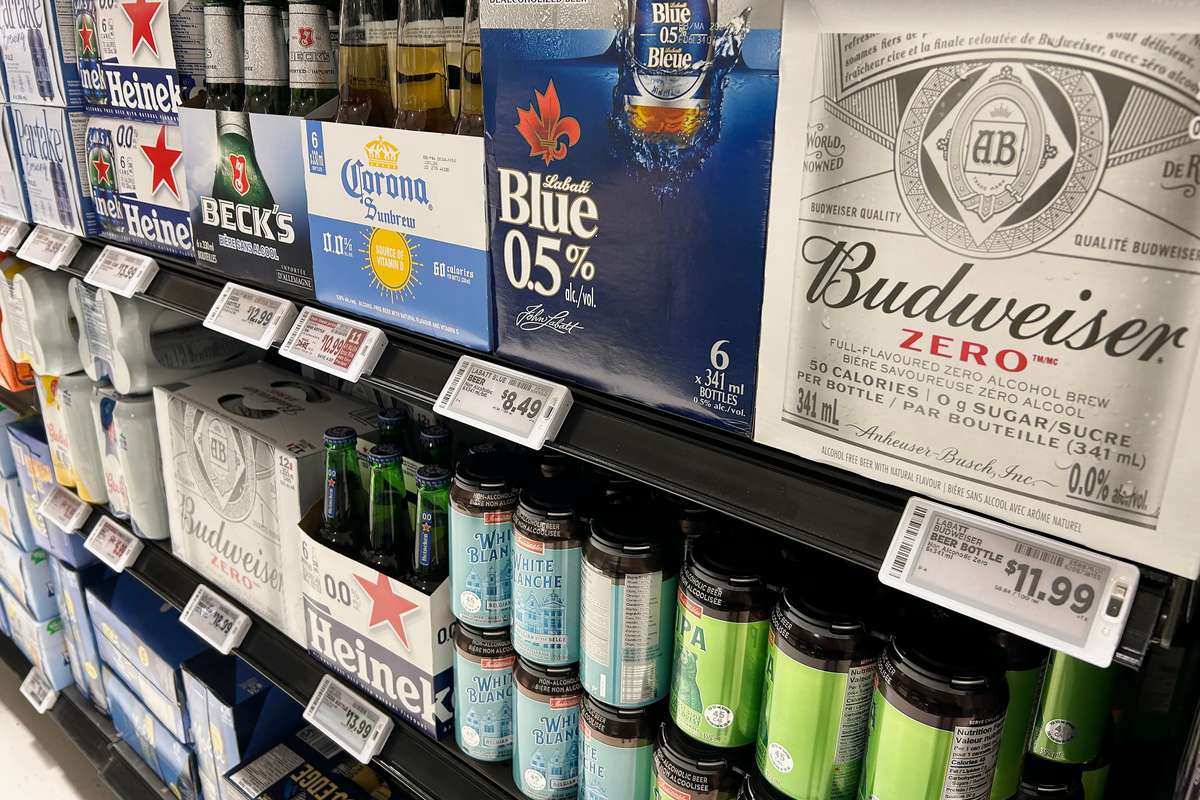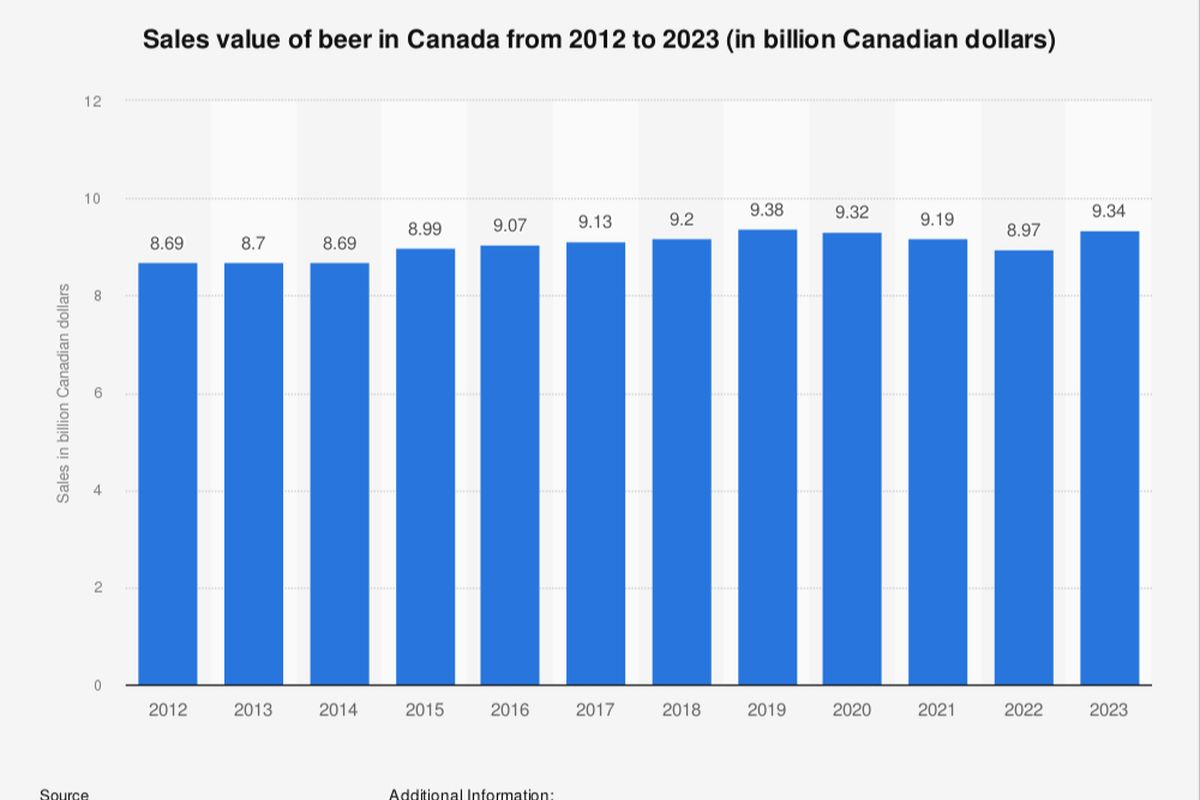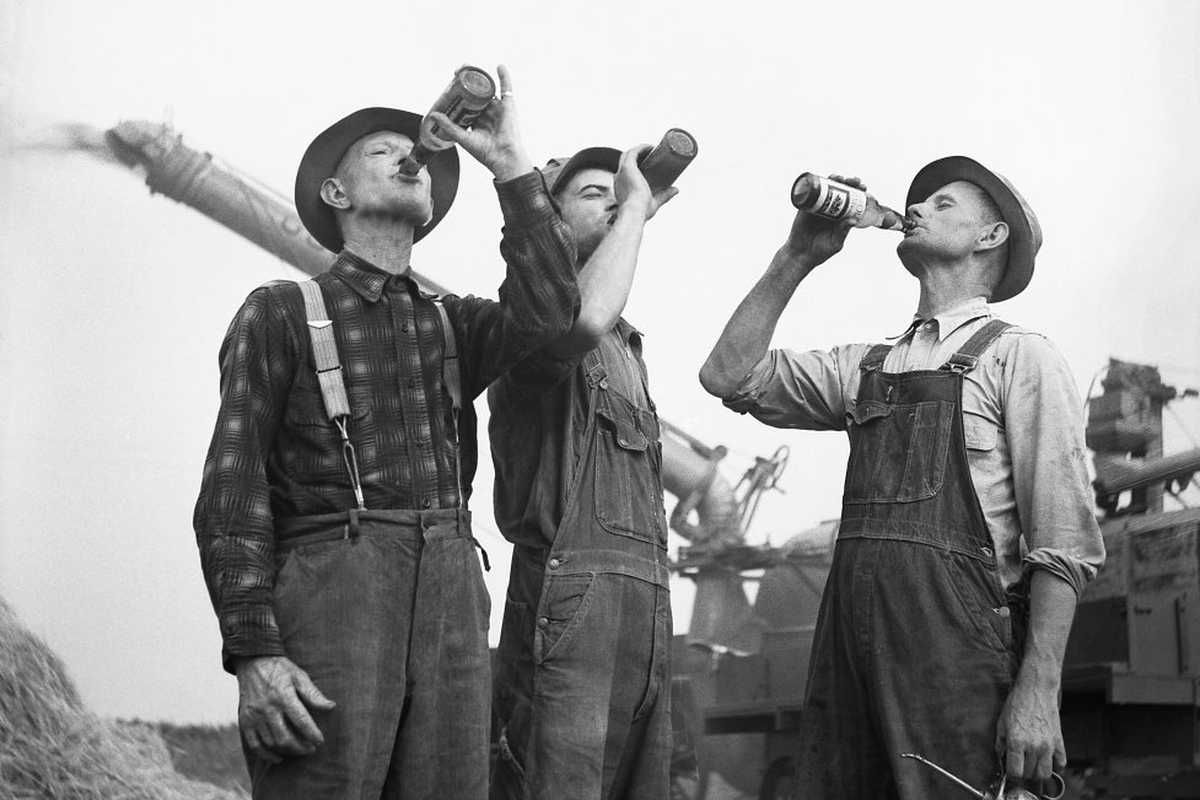Cash advance here might seem like the easiest path when your craft brewery needs capital for that new fermenter or taproom expansion, but there’s a smarter approach revolutionizing how brewers secure funding. Artificial intelligence is transforming the traditionally frustrating loan application process into a streamlined experience that understands your brewery’s unique financial rhythms—from seasonal sales fluctuations to the lag between grain purchases and revenue from kegs rolling out your door.
Picture this: Instead of spending weeks visiting different banks, explaining why your summer IPA sales spike justifies that equipment loan, or why your barrel-aging program requires patient capital, AI-powered platforms analyze your brewery’s financial data in minutes. These systems match you with lenders who actually understand craft brewing’s business model, comparing your financial health against thousands of similar breweries to identify the most favorable terms available.
The technology works behind the scenes like a knowledgeable beer distributor who knows every account in town—except it connects your brewery with lending partners based on data-driven compatibility rather than gut feelings. AI algorithms evaluate your cash flow patterns, inventory turnover, tap list diversity, and growth trajectory, then present personalized loan options from lenders specializing in craft beverage businesses. This means you’re not competing against restaurants or retail shops in a generic small business pool; you’re being evaluated alongside your brewing peers using industry-relevant metrics.
For brewery owners juggling recipe development, compliance paperwork, and taproom management, this innovation eliminates the financing guesswork. Whether you’re a nanobrewery planning your first expansion or an established operation eyeing that canning line upgrade, understanding AI loan matching could be your brewery’s competitive advantage in securing growth capital efficiently.
The Funding Challenge Every Craft Brewery Faces
Starting a craft brewery is a labor of love, but let’s be honest—it’s also a substantial financial undertaking that can feel overwhelming even for the most passionate brewers. The reality is that transforming your award-winning homebrew recipe into a commercial operation requires significant capital investment, often ranging from $500,000 to well over $2 million depending on your scale and vision.
The equipment alone tells the story: a quality brewhouse system, fermentation tanks, cooling infrastructure, packaging lines, and taproom fixtures all come with hefty price tags. Many aspiring brewery owners discover that their initial budget estimates were overly optimistic once they factor in licensing fees, regulatory compliance costs, and the inevitable unexpected expenses that emerge during buildout.
Beyond startup costs, craft breweries face unique operational challenges that traditional lenders often misunderstand. Seasonal fluctuations in demand mean cash flow can swing dramatically throughout the year—summer might bring robust taproom traffic while winter months require careful financial navigation. Inventory management becomes a delicate balance; you need sufficient raw materials for brewing schedules, yet hops, malt, and specialty ingredients represent substantial working capital tied up before a single pint generates revenue.
Here’s where the funding gap widens: conventional banks typically evaluate loan applications using standardized metrics that don’t capture the economic impact of craft brewing or the industry’s growth potential. Loan officers without brewing industry experience may struggle to assess the value of your specialized equipment or understand why your debt-to-revenue ratio looks different from a typical retail business. While federal tax relief programs provide some support, they rarely address immediate funding needs.
This disconnect leaves many talented brewers caught between their vision and financial reality—exactly the challenge that innovative lending solutions are now beginning to address through technology designed specifically for our industry’s unique characteristics.
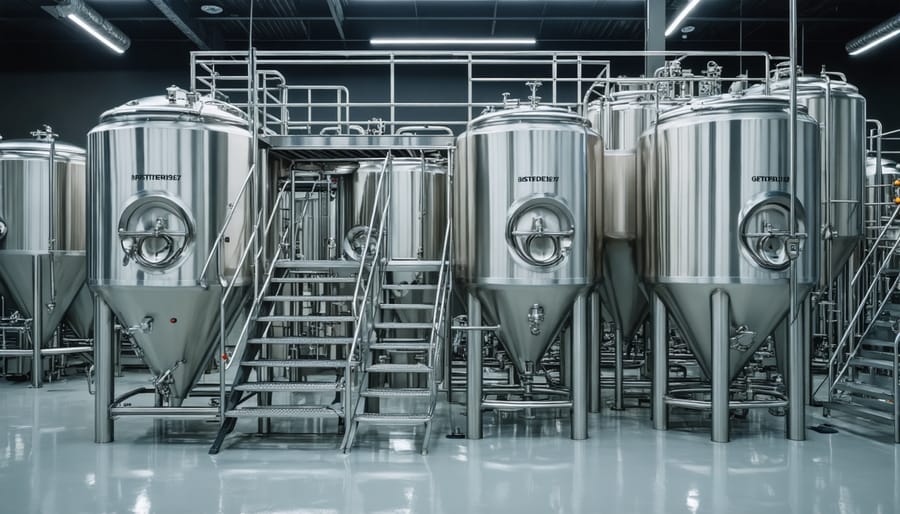
What AI Loan Matching Actually Means for Brewers
Beyond Traditional Bank Applications
Traditional bank lending has long operated on a one-size-fits-all model, evaluating craft breweries through the same rigid lens used for dry cleaners or retail shops. Picture a banker reviewing spreadsheets, unable to see the vibrant taproom packed with loyal regulars every Friday night or understand why a barrel-aged stout program represents genuine long-term value. This conventional approach often leaves innovative brewers without the capital they need to grow.
AI-powered loan matching transforms this landscape by recognizing what makes breweries unique. These sophisticated platforms analyze the rhythm of your business—the seasonal surges when your Oktoberfest lager flies off shelves, the steady revenue from that recently secured grocery distribution contract, or the impressive foot traffic your taproom generates during weekend events. The technology examines social media engagement, customer retention rates, and even local market saturation to paint a complete picture of your brewery’s health.
Where traditional lenders might see inconsistent quarterly revenues and walk away, AI systems understand that craft brewing follows natural cycles. They recognize that investing in a canning line or expanding barrel-aging capacity creates future value, even if immediate returns aren’t obvious on a standard balance sheet. This nuanced approach connects brewers with lenders who genuinely understand the industry’s unique financial patterns, creating partnerships built on realistic expectations rather than cookie-cutter criteria. For brewery owners who’ve faced rejection from conventional banks, this technology opens doors that previously remained firmly closed.
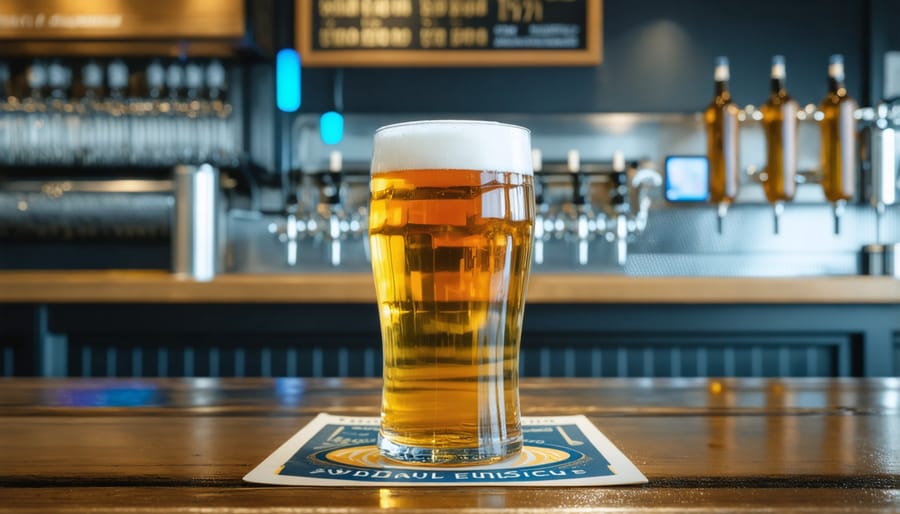
Real Benefits Behind the Technology
Finding Lenders Who Speak Your Language
Picture this: you’re sitting across from a traditional banker, explaining why you need $150,000 for a coolship and oak foeders for your spontaneous fermentation program. The glazed-over expression tells you everything—they just don’t get it. This disconnect has frustrated brewery owners for years, but AI loan matching platforms are changing the game by connecting you with lenders who actually understand your world.
These intelligent systems don’t just match numbers; they match industry expertise. When you input your financing needs for a canning line expansion or barrel aging program, the AI identifies lenders with proven track records in beverage industry financing. They’re the ones who know that a four-vessel brewhouse isn’t just equipment—it’s your production capacity, your quality control, and your path to scaling up.
Behind the scenes, these platforms analyze lender portfolios, past brewery deals, and industry specializations to create meaningful connections. A lender experienced in craft brewing understands seasonal cash flow patterns, the long-term investment in barrel programs, and why taproom revenue streams justify certain loan structures. They’ve walked brewery floors, seen fermentation tanks in action, and grasp the community-building aspect of your taproom expansion plans.
This targeted approach saves you countless hours of explaining your business to skeptical lenders. Instead, you’re matched with financial partners who appreciate the craft, understand your growth trajectory, and speak your language from day one—whether that’s discussing brite tank capacity or mixed-culture fermentation timelines.
Time Savings That Matter When You’re Brewing
Every brewer knows the soul of craft beer lives in the brewhouse—monitoring fermentation temperatures, perfecting recipes, and ensuring each batch reflects their unique vision. Yet too many passionate brewers find themselves drowning in loan applications, spending precious hours deciphering lender requirements, gathering financial documents, and submitting multiple applications to different institutions, each with its own Byzantine process.
AI loan matching transforms this exhausting reality into a streamlined experience that respects what matters most: your time at the kettle. Instead of dedicating entire weekends to navigating the financing maze, brewers can complete a single comprehensive profile and let intelligent algorithms identify the most compatible lenders. What once consumed 40-60 hours across multiple applications now takes a fraction of that time.
The beauty of automated matching extends beyond mere speed—it’s about precision. Rather than casting a wide net and hoping something sticks, AI analyzes your brewery’s specific financial profile, growth stage, and equipment needs to connect you with lenders who actually understand craft brewing operations. This means fewer rejections, less wasted effort, and more meaningful conversations with financial partners who appreciate the difference between a bright tank and a brite tank.
For small brewing teams where the owner wears multiple hats—brewer, salesperson, bookkeeper, and janitor—reclaiming those hours means getting back to recipe development, community engagement, and the creative work that inspired them to open a brewery in the first place. Time saved on paperwork becomes time invested in brewing exceptional beer.
How Craft Breweries Are Using These Loans
The transformative power of AI loan matching becomes crystal clear when you see it in action at breweries across the country. Take Mountain Ridge Brewing in Colorado, where owners Sarah and Mike struggled for months with traditional bank applications for a new canning line. Their seasonal revenue patterns made lenders hesitant, but AI matching connected them with a specialty lender familiar with craft beverage cyclicality. Within three weeks, they secured funding and now distribute their award-winning IPAs to three neighboring states, creating eight new jobs in their rural community.
Over in Portland, Cascade Hop Collective used AI-matched financing to transform their sustainability vision into reality. The technology identified green energy lenders who offered preferential rates for their solar panel installation and water reclamation system. “We cut our utility costs by 40% and reduced our environmental footprint dramatically,” says head brewer James Chen. “The AI found lenders who actually valued our commitment to sustainable brewing practices and rewarded us for it.”
Taproom expansions represent another common application, as demonstrated by Southside Brewing Company in Austin. Their AI-matched loan came with flexible repayment terms aligned with their growth projections, allowing them to double their seating capacity and add a kitchen. The result? A vibrant community gathering space hosting local musicians, trivia nights, and homebrew club meetings—exactly the kind of neighborhood hub that makes craft breweries special.
Equipment upgrades are perhaps the most frequent use case. Just as craft brewers are innovating with new beverage categories, they’re leveraging better financing to upgrade their capabilities. AI matching helps brewers secure loans for fermentation tanks, quality control laboratories, and packaging equipment—investments that directly improve product consistency and production capacity.
Distribution growth receives similar support. Lakefront Artisan Ales in Michigan used their AI-matched funding to purchase refrigerated delivery vehicles and hire distribution staff, expanding their footprint from two counties to statewide availability. Their seasonal farmhouse ales now reach beer lovers throughout the Great Lakes region, proving that the right financing at the right time can catalyze remarkable growth while maintaining that crucial craft brewery authenticity and community connection.
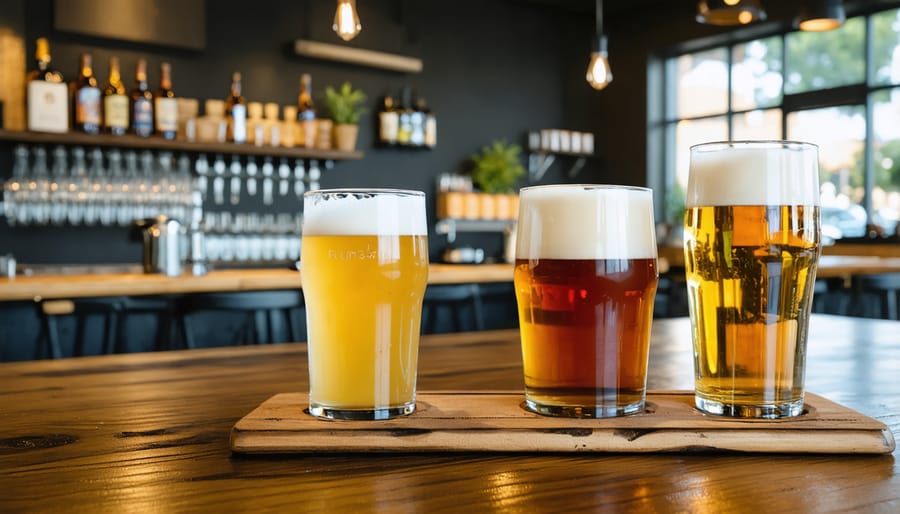
What to Know Before You Apply
Preparing Your Brewery’s Financial Story
Before diving into AI loan matching, you’ll want to organize your brewery’s financial narrative in a way that both algorithms and human lenders can appreciate. Start by gathering three years of financial statements, tax returns, and detailed sales records that showcase your seasonal rhythms—those summer patio surges and cozy winter stout releases tell an important story about your cash flow patterns.
Document what makes your brewery special: your award-winning recipes, loyal taproom following, distribution partnerships, and community involvement. These unique assets help AI systems identify lenders who value craft brewing’s intangible strengths beyond just numbers. Include photos of packed release events and testimonials from local accounts—these behind-the-scenes elements humanize your application.
Pay particular attention to inventory management and production costs, as these brewing-specific metrics often puzzle traditional lenders but are well-understood by specialized AI platforms. If you’ve weathered market challenges reflected in Canadian craft beer sales trends, explain your adaptive strategies. This preparation transforms raw data into a compelling financial story that resonates with both sophisticated algorithms and fellow beer enthusiasts evaluating your loan worthiness.
The Human Touch Still Matters
While AI loan matching brings powerful analytical capabilities to craft brewery financing, it’s essential to remember that brewing has always been—and remains—a deeply human endeavor. The algorithms can crunch numbers and identify lending opportunities, but they can’t replicate the trust built over a pint with your community banker or the nuanced understanding that comes from sharing your brewery’s story face-to-face.
The most successful brewery financing journeys blend technological efficiency with personal relationships. AI tools excel at navigating the complex landscape of loan products and eligibility requirements, saving countless hours of research and application preparation. However, the final conversations still happen between people who understand that a craft brewery represents more than just financial projections—it’s a gathering place, an employer, and a keeper of Canadian brewing tradition.
Community banks and credit unions, often the backbone of craft brewery financing, increasingly use AI matching systems as referral tools rather than replacement mechanisms. They appreciate how these platforms pre-qualify serious applicants and organize documentation, allowing loan officers to spend more time understanding each brewery’s unique vision and challenges. A banker who knows your taproom regulars, appreciates your seasonal releases, and understands local market dynamics brings irreplaceable value that no algorithm can match.
Think of AI loan matching as your tireless research assistant—one that works 24/7 to identify opportunities and organize information. But when it’s time to make your case, to explain why your sour program deserves investment or how your community partnerships strengthen your business model, that’s where your passion, knowledge, and human connections shine brightest. Technology opens doors; relationships help you walk through them confidently.

At its heart, craft brewing has always been about more than just business—it’s about passion, creativity, and the connections we forge within our communities. The taprooms we gather in, the collaborations between neighboring breweries, and the commitment to quality over mass production define who we are. AI loan matching doesn’t change that; rather, it serves as a modern tool that honors these values by making financing more accessible and transparent for brewers who might otherwise struggle to secure capital through traditional channels.
Think of it as leveling the playing field. While large commercial operations have teams of financial advisors and established banking relationships, independent craft breweries often navigate financing alone. AI loan matching technology bridges this gap, offering sophisticated analysis and personalized recommendations that help small brewers compete without compromising their artisan identity. It’s about preserving what makes craft brewing special while embracing innovations that strengthen our community’s foundations.
The future of brewery financing looks brighter because of these advancements. As AI systems continue learning and improving, they’ll better understand the unique rhythm of seasonal beer releases, the value of taproom culture, and the importance of local ingredient sourcing. For aspiring brewers dreaming of opening their doors and established operations planning expansions, this technology represents opportunity—a chance to focus energy where it belongs: crafting exceptional beer and building lasting community connections. The tools may be new, but the mission remains unchanged.
